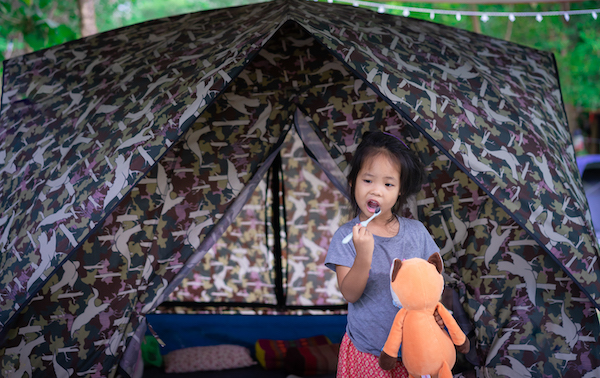 Head Start programs and families might not consider oral health when preparing for or recovering from an emergency or disaster. Being prepared and knowing how to respond to urgent oral health problems may help make an injured child more comfortable.
Head Start programs and families might not consider oral health when preparing for or recovering from an emergency or disaster. Being prepared and knowing how to respond to urgent oral health problems may help make an injured child more comfortable.
This Brush Up on Oral Health tip sheet discusses how to prepare for oral emergencies before a situation occurs, as well as how to deal with some oral health challenges that staff may face after a disaster.
Oral Health Considerations Before an Emergency
Before an emergency, consider the following:
- Receive first aid training from oral health professionals. Identify at least one Head Start staff member to receive training from an oral health professional on how to provide first aid for oral injuries. Trained staff can act as the “go-to” person(s) to handle oral injuries during or after a disaster.
- Train staff on how to get help. Train staff to call 911, or 9-911 if an outside line is needed, for bleeding that cannot be stopped.
- Add oral injury supplies to the first aid kit. Make sure first aid kits contain these supplies to assess and manage an oral injury:
- Assess Oral Injury
- Instructions on how to assess and provide first aid to oral injuries.
- Non-latex rubber gloves to wear while inspecting or cleaning the injured area.
- Flashlight to see inside the mouth while inspecting the injured area.
- Clean Area, Control Bleeding, and Protect Area
- Bottled water to clean blood and dirt from the injured area.
- Mild soap to clean blood and dirt from the injured area.
- Cotton balls or 2-inch x 2-inch gauze pads to stop bleeding and protect the injured area.
- Plastic bags to dispose of biohazard waste, like blood-soaked gauze.
- Salt to dissolve into warm water to make a mouthwash to rinse mouth.
- Ease Pain and Swelling
- Floss to remove anything stuck between teeth to relieve oral pain.
- Acetaminophen or ibuprofen to relieve oral pain.
- Instant cold ice packs to reduce swelling.
- Clean cloths to wrap ice packs to reduce swelling.
- Assess Oral Injury
Oral Health Considerations After a Disaster

After a disaster, water contamination can be a serious problem. It is important not to prepare food, mix infant formula, wash dishes, brush teeth, wash hands, or make ice with contaminated water. To learn how to make water safe for drinking after a disaster, read the handout on how to Make Water Safe.
Teeth must be brushed twice a day, even when safe water is not available. To brush teeth without water, do the following:
- Brush using fluoride toothpaste on a dry toothbrush.
- After brushing, spit out the toothpaste. It is not necessary to rinse the mouth with water.
- Toothbrushes do not need to be rinsed after brushing.
- When storing toothbrushes, make certain they are not touching to avoid cross-contamination.
Depending on the severity of the disaster, local, state, and federal response efforts may offer oral health care services as part of the disaster response and recovery. To find out if and where oral health care services are available, call the local health department or listen for public safety announcements on local TV and radio stations.
Download a PDF version to print and share.
Read more:
Resource Type: Article
National Centers: Health, Behavioral Health, and Safety
Audience: Teachers and Caregivers
Series: Brush Up on Oral Health (BUOH)
Last Updated: November 7, 2024
